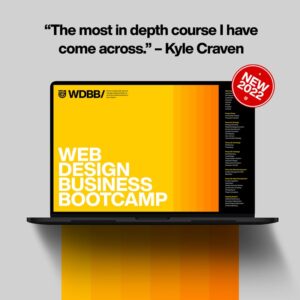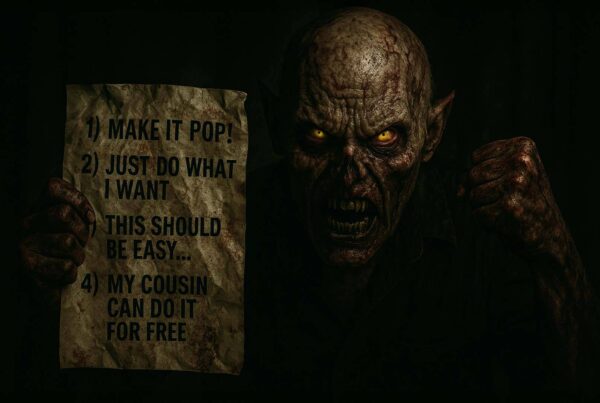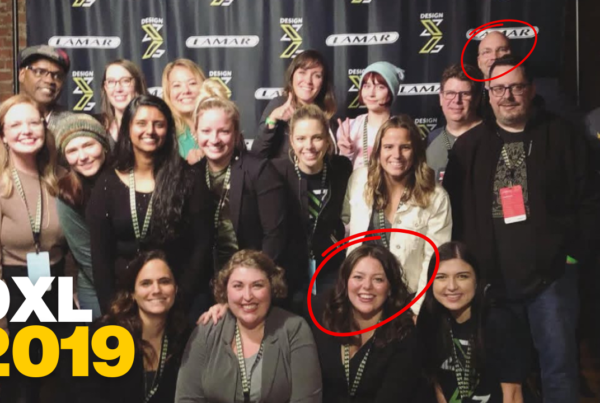“We decided to go with another agency,” once again we weren’t selected for the project. “Ahhhhhhhhhhh!!! We thought we had the project in the bag. Why were we not chosen?” Every freelance designer or agency owner has been there, and probably more than once. The reality is that, as the adage states, “You can’t win ‘em all.” However, you can improve your chances of winning pitches for new work with a few smart techniques.
 1. Discuss the client’s needs.
1. Discuss the client’s needs.
Most designers have decent enough skills at presenting their work. And, as a result, they do an admirable job of walking a potential client through their portfolio of past projects. This has become the default culture for designers. Unfortunately, it is a flawed strategy. You must resist the initial urge to talk about yourself and first discuss the client’s needs.
Potential clients are only interested in what you have created for others as it relates to what you can create for them. WIIFM? (What’s In It For Me?) is on their mind with every page you turn in your proud portfolio. Before you present one piece of work take some time to ask a few questions.
- “What is it that you are wanting to create?”
- “What problem are you trying to solve in your business?”
- “What is the message you are trying to communicate with the project?”
- “What are the results you are hoping to achieve?”
- “Have you tried creating something like this before? How did it go?”
- “Have you tried solving this problem in other ways? How did that go?”
- “What are some of the concerns you have about the project?”
- “What has your past experience with other designers been like?”
Take careful notes and plan to address their needs in your pitch. It is helpful if you gather this general information prior to the pitch meeting. However, it is not uncommon to have to do it on the fly.
2. In a follow-up meeting, present your plan to execute on their project in detail.
Now that you know what the potential client needs it is time to prove to them that you are the best choice to do the work. Lucky for you, you now have an opportunity to strategically show off your fancy portfolio. To help illustrate how this conversation should flow, here is an example assuming the potential client needs to create a brochure…
“Thanks, for the info. I think I have a clear understanding of the brochure you are hoping to create. I’d love to take a few minutes to explain to you how your project will go and to show you a few examples of similar projects.”
“First, I’ve learned over time that it is important to embark on an in-depth kickoff and strategy phase for a project before we design anything. So we’ll start by gathering all of the text and images you want to include in the brochure. We’ll organize this information and prepare some wireframe layouts to establish the size of brochure necessary for all of the content you are hoping to include. Here are some examples of what that will look like.”
(Show off examples)
“Next, we’ll begin designing the look and feel of the brochure. This is the fun part when things really start to come to life. We’ll present you with three initial comp ideas and discuss your feedback. You’ll be able to tell us what you like and what you don’t like for each comp. Your feedback is critical because ultimately this is your project and we want to make sure you are happy with the design. We’ll take your feedback on the initial comps and refine them into a finished comp during two more rounds of comps and feedback. Here are some examples of past brochures we have done.”
(Show off and discuss portfolio examples that prove your capability to execute on their project)
“Finally, we will prepare your final design for press and we will coordinate everything for the printing. If you have a printer you like to use, we will be happy to work with them. Otherwise, we can get some printing quotes for you. We’ll also go to the printer and do press checks to make sure the colors and print quality meet expectation. All in all, we’ll take care of the printing coordination to make sure this part of the project goes smoothly.”
(Share testimonial about your abilities from a printer you use)
Obviously I have shortened up the actual conversation a bit for the sake of this write-up, but take careful note to the tone and presentation strategy. Several other items from the questions in point 1 could also be addressed while discussing your execution strategy. Keep in mind, you do not give them the solution here! You should charge for the solution! In this proposal presentation you are walking them through the process you will use (and charge them for) to create their solution. Your focus should be on addressing your potential client’s needs and answering their “WIIFM?” questions they are likely asking themselves as you speak.
3. Discuss results.
The final items that should be discussed are results. For a designer, creating a cool design is result enough. But your clients will want more. As appropriate to the project, share with your potential client your thoughts about how the work you create for them will:
- Improve their brand image
- Drive traffic to their company
- Improve sales conversion
- Increase customer retention
This is also a great time to share with them the results your other clients have achieved with projects you’ve created. It never hurts to share things like…
“I designed this brochure for a client to hand out at a trade show. They generated $X,XXX of sales from the show.”
(Be sure to always ask past clients for their results or a testimonial to share in your pitches.)
Certainly, this is not the only strategy for pitching projects and there are plenty of additional discussion points that could be included. Next time you are invited to pitch on a potential project, don’t fall into the trap of just presenting your portfolio of work and hoping for the best. (Let your competitors do that.) A little preparation and a little more focus on the client’s needs can go a long way to helping you win new work.












